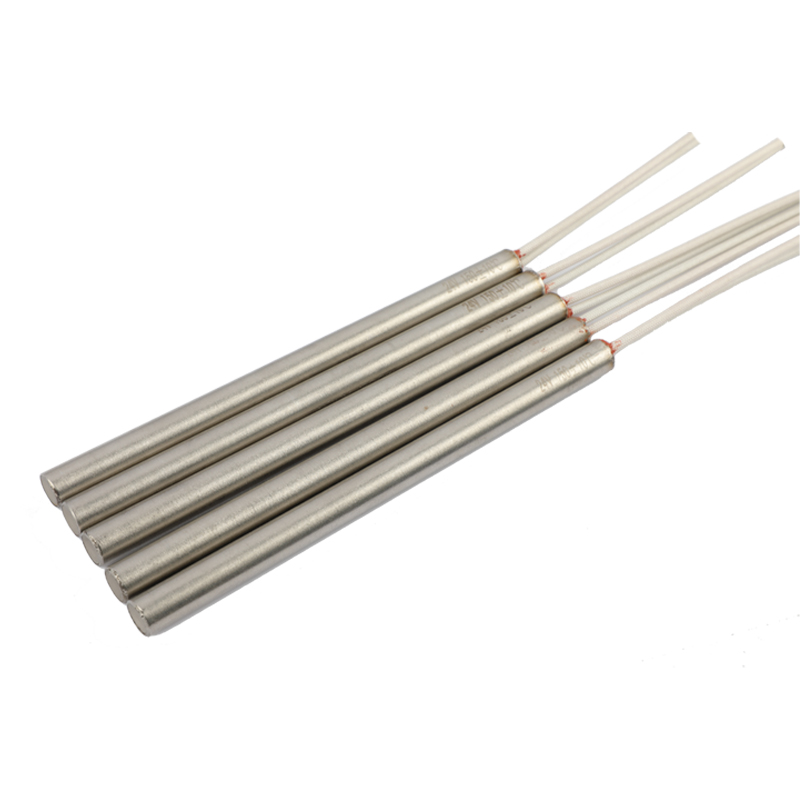Tubular heating Elements are among the most widely used electric heating solutions in the world, known for their durability, design flexibility, and efficiency. Their robust construction and customizable nature make them ideal for a wide range of industrial and commercial applications. In this article, we explore how Tubular Heating Elements are applied across various sectors, highlighting their critical roles in heating, processing, and energy transfer.

1. Water Heating Systems (Electric Water Heaters)
One of the most common applications of tubular heating elements is in electric water heaters, including household storage heaters, instant heaters, and industrial water tanks.
Why use tubular heating elements in water heaters?
Efficient and uniform heat transfer in direct contact with water.
Corrosion-resistant materials (such as stainless steel or copper) ensure durability.
Easy integration with thermostats and safety systems.
Types used: U-shaped or spiral tubular elements immersed directly into water tanks or heating chambers.
2. HVAC and Air Conditioning Compressors
In HVAC systems, especially in colder climates, tubular heating elements play a crucial role in compressor crankcase heaters. They prevent refrigerant migration and maintain oil viscosity.
Advantages in HVAC systems:
Protect compressors during cold starts.
Maintain stable operation and reduce downtime.
Simple to install with flexible mounting brackets.
3. Plastic and Rubber Mold Heating
Tubular Heaters are often embedded or attached to mold plates in the plastic and rubber molding industries to maintain precise temperatures.
Benefits in mold heating:
Custom shapes (bent or formed) to match mold contours.
Fast heat-up and consistent temperature distribution.
Long-lasting even under repeated thermal cycling.
Application areas: Injection molding, extrusion dies, thermoforming molds, and compression molding.
4. Food Processing Equipment
Tubular heating elements are commonly used in a wide range of commercial and industrial food equipment such as ovens, fryers, steam tables, sterilizers, and hot plates.
Why they’re ideal for food applications:
Hygienic stainless steel sheathing options.
Uniform heating for consistent food quality.
Moisture and oil-resistant design for harsh kitchen environments.
Example equipment:
Electric deep fryers
Baking ovens
Bain-maries
Pasta boilers
5. Industrial Heating Systems
In manufacturing and process industries, tubular heating elements serve in air heaters, oil heaters, chemical tanks, and autoclaves.
Key advantages in industrial systems:
Withstand high watt densities and extreme environments.
Available in high-power configurations.
Compatible with digital temperature control systems.
Used in:
Chemical processing
Pharmaceutical production
Metal finishing and plating
Petrochemical plants
6. Home Appliances
Many household appliances rely on tubular heating elements for their heating functionality, including:
Electric ovens
Toasters
Dishwashers
Coffee makers
Clothes dryers
These elements are chosen for their compact form, long service life, and quick response times.
7. Commercial and Laboratory Equipment
In commercial dishwashers, sterilizers, lab incubators, and dryers, Tubular Heaters maintain precise internal temperatures necessary for sensitive operations.
Highlights:
Compatibility with thermal sensors and PID controllers
Excellent repeatability and reliability
Available in low-profile and compact configurations
Tubular heating elements are essential across industries thanks to their adaptability, energy efficiency, and robust performance. Whether heating water, air, oil, or solids, these elements provide reliable thermal solutions for both standard and highly specialized applications. With the option for custom wattage, voltage, shape, and sheath material, they offer unmatched versatility in heating design.
If you're looking for custom tubular heating elements for your specific industrial or commercial application, be sure to partner with a supplier who offers engineering support, quality assurance, and full customization.






